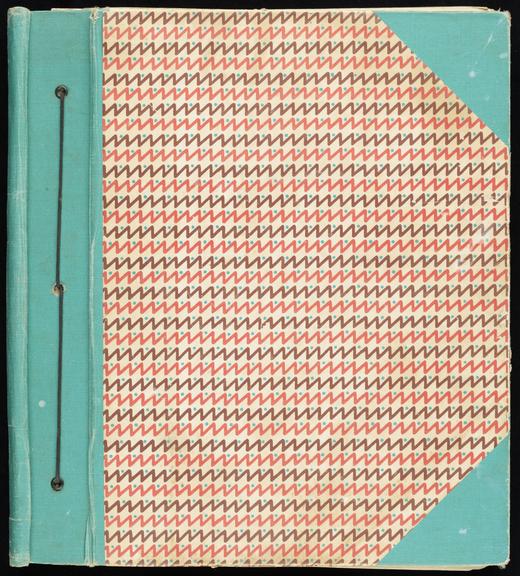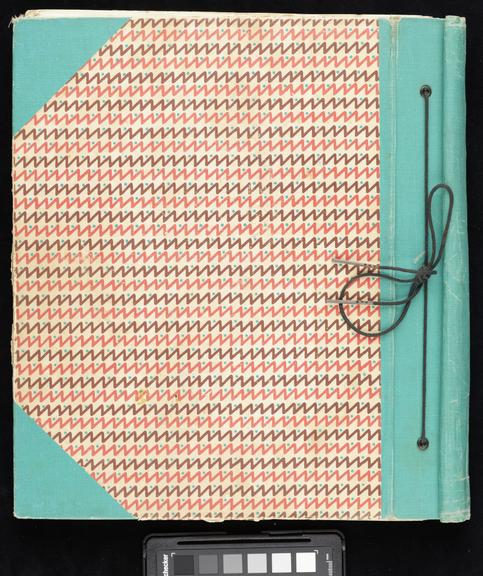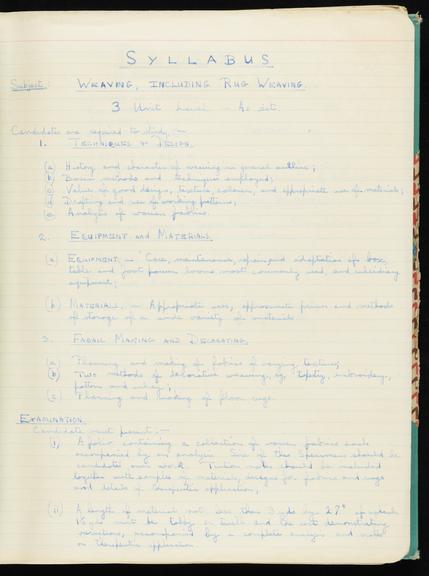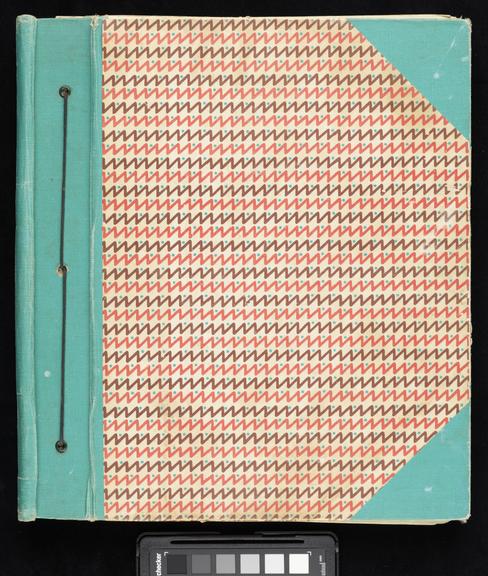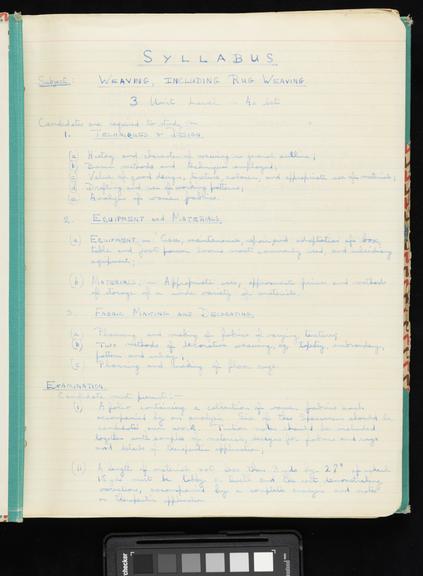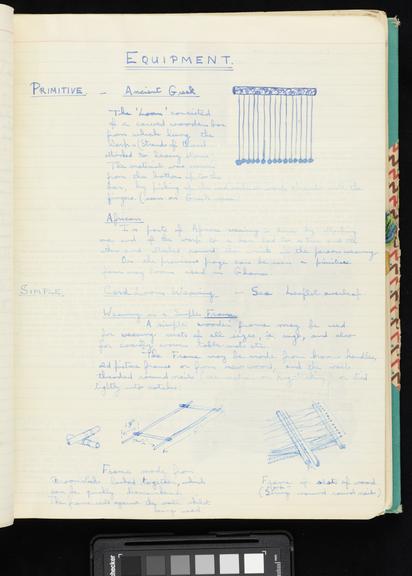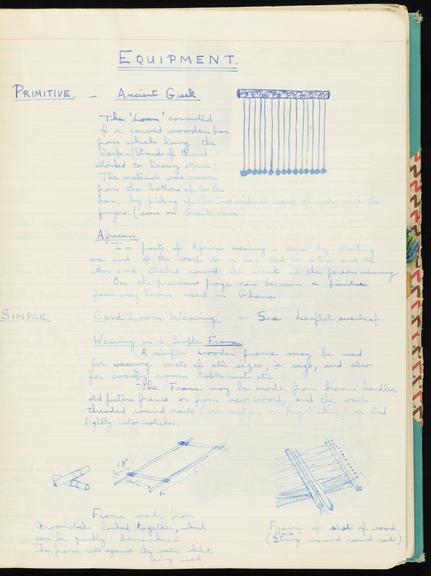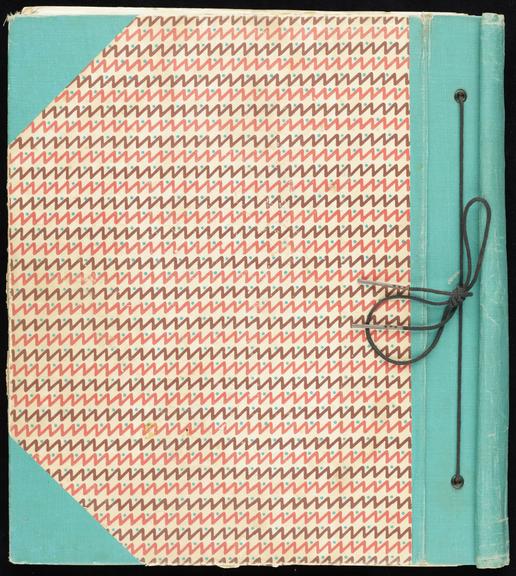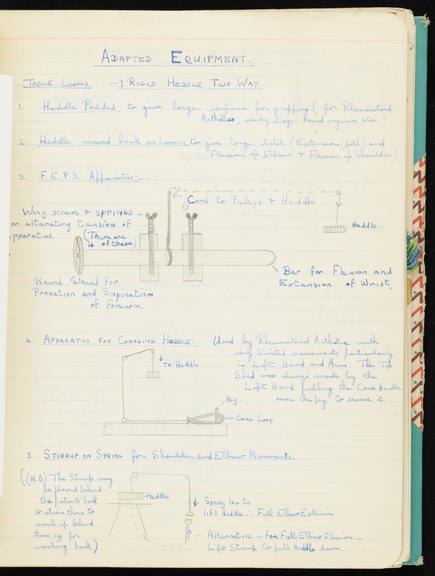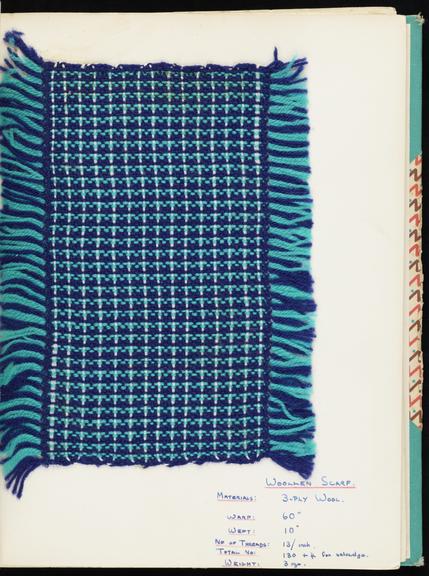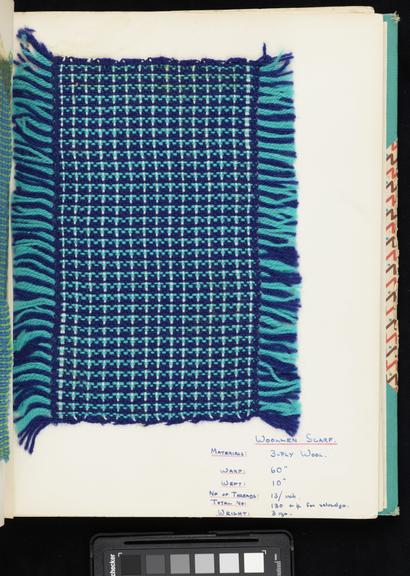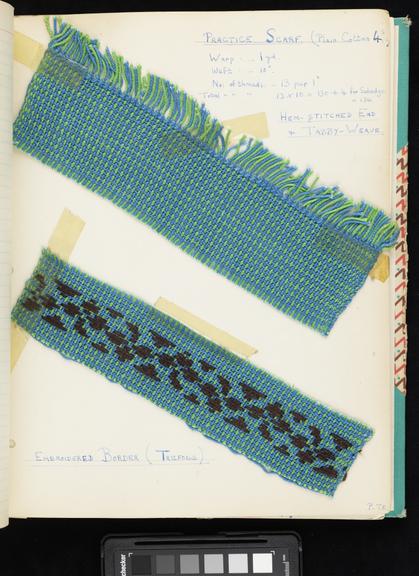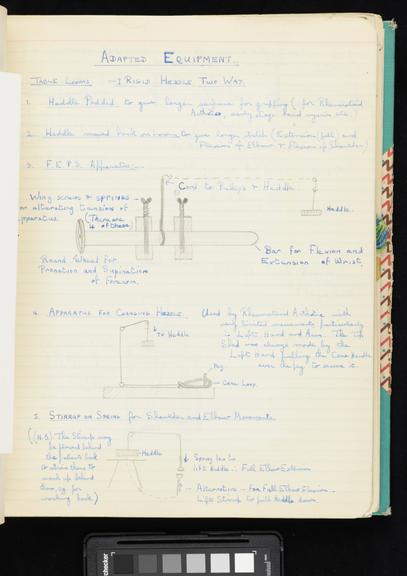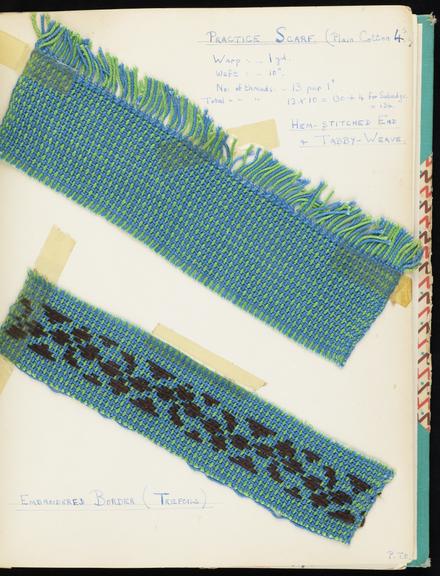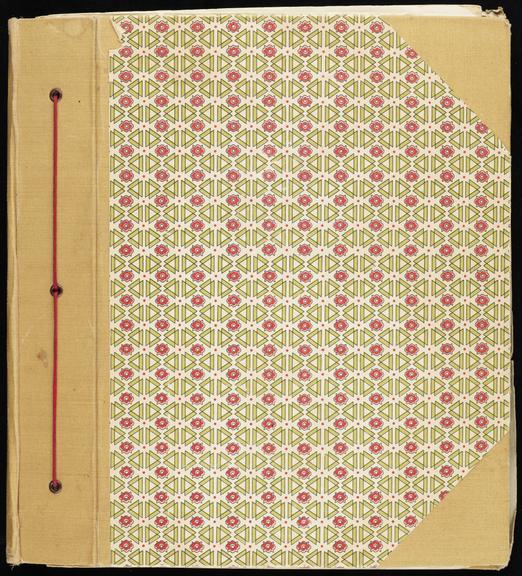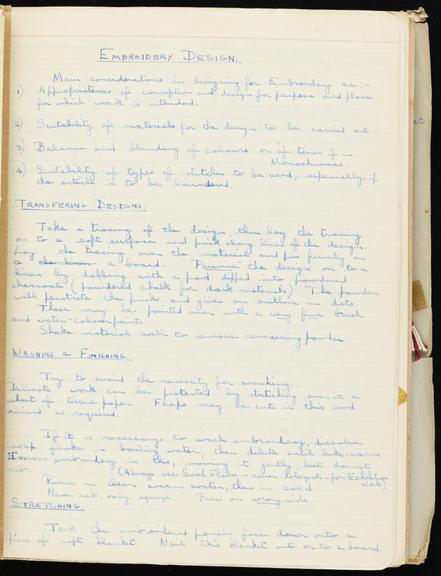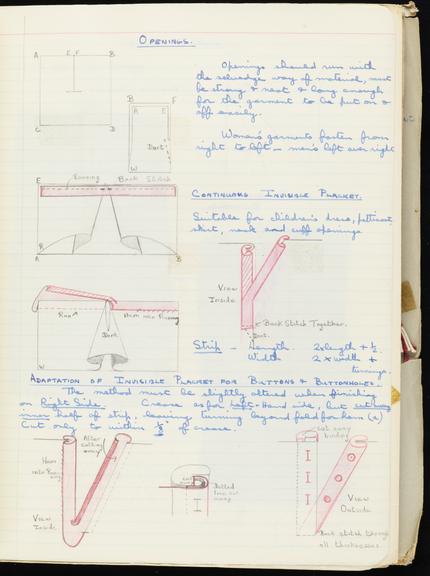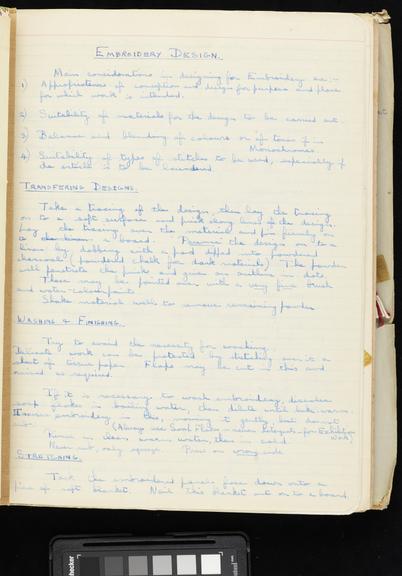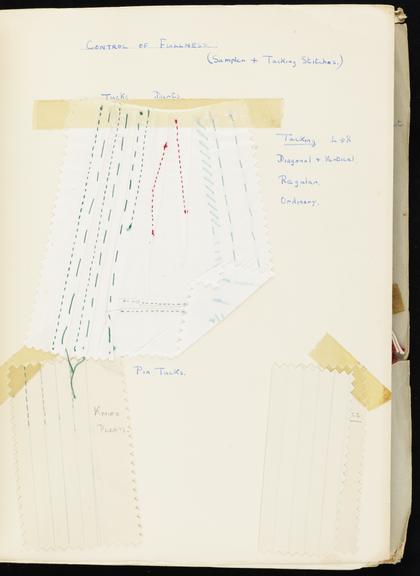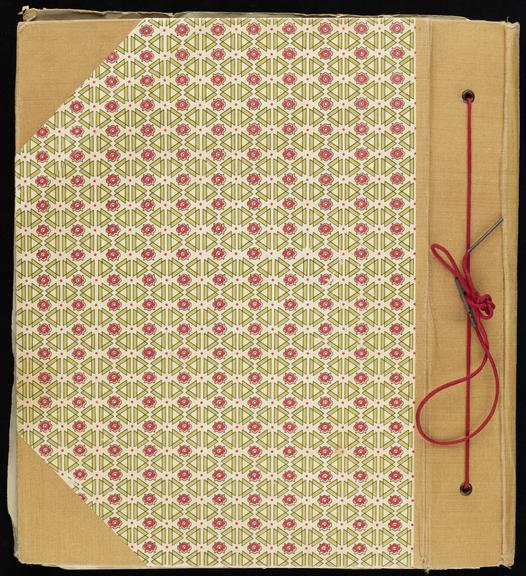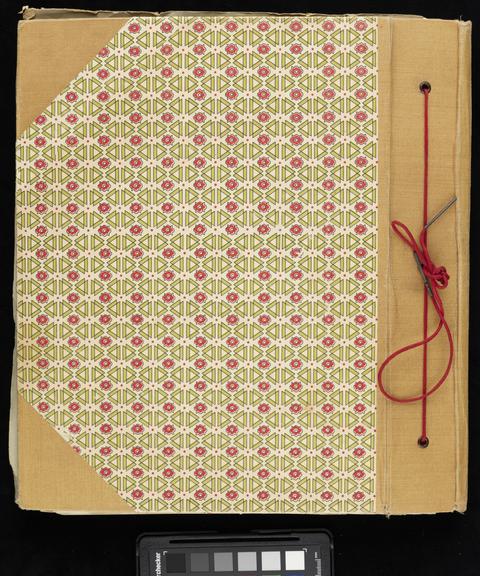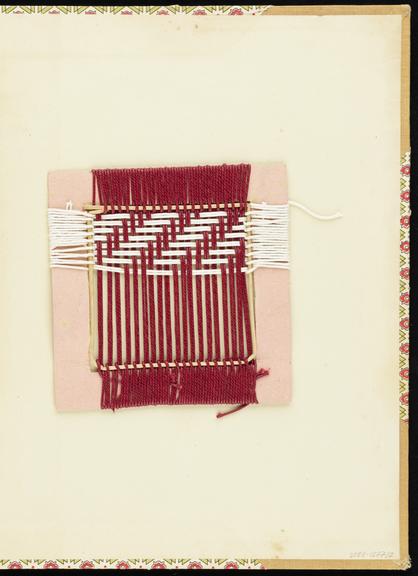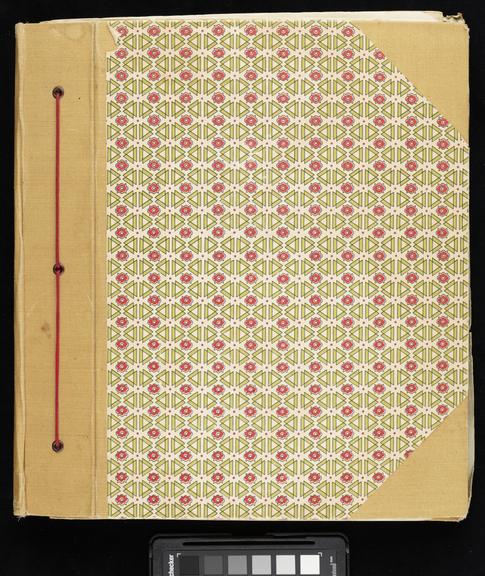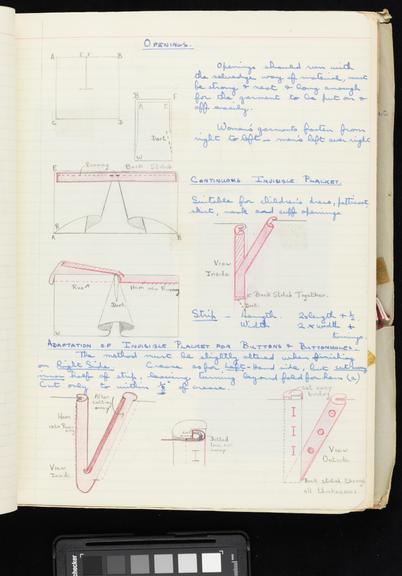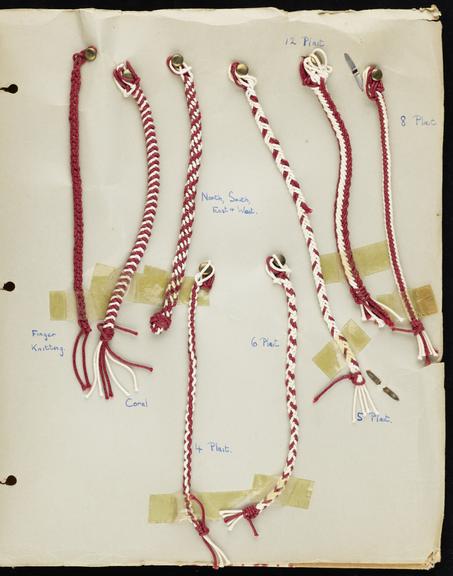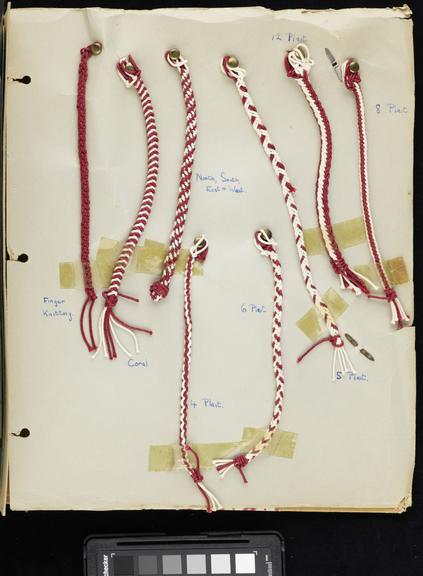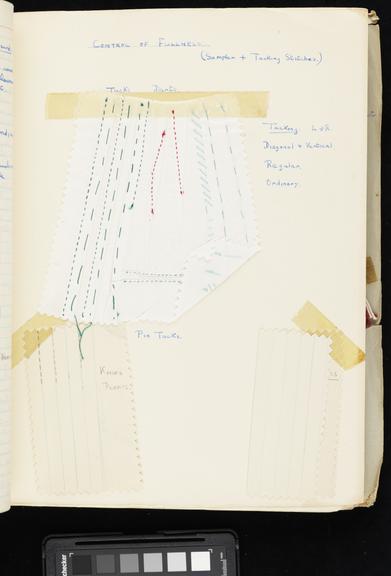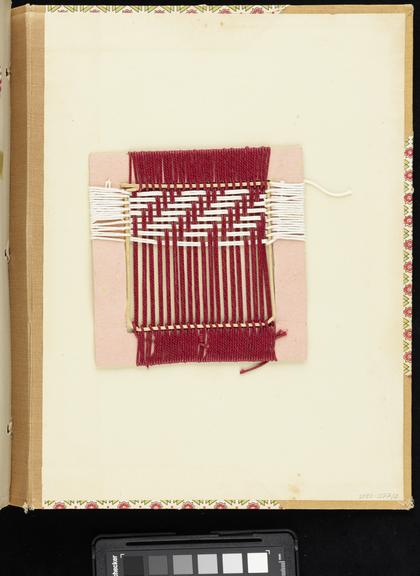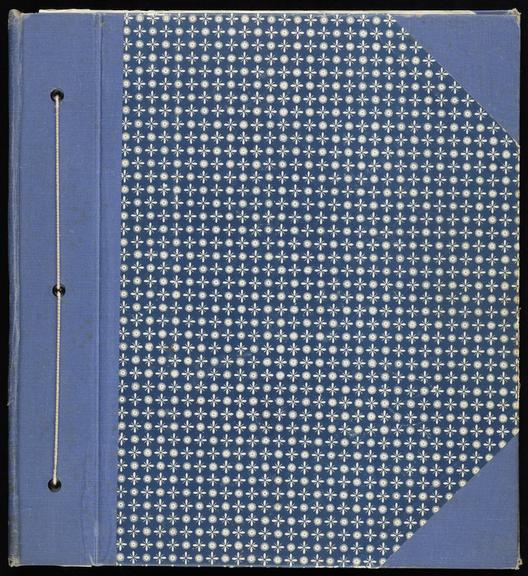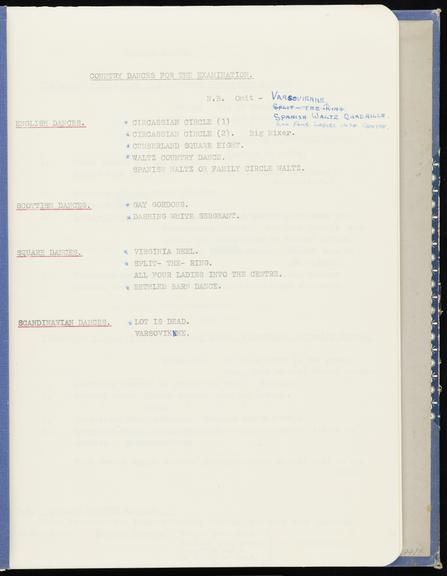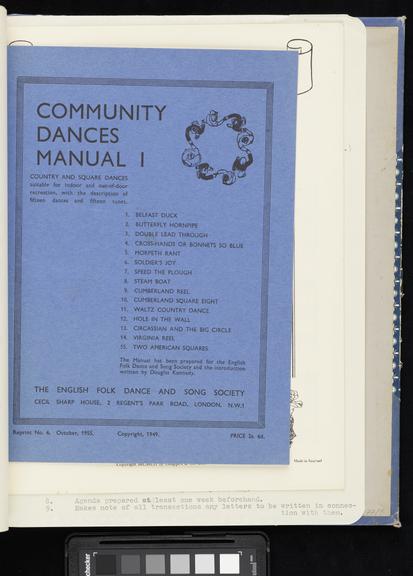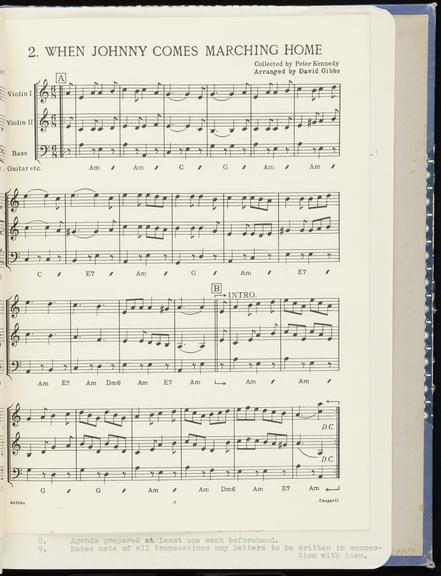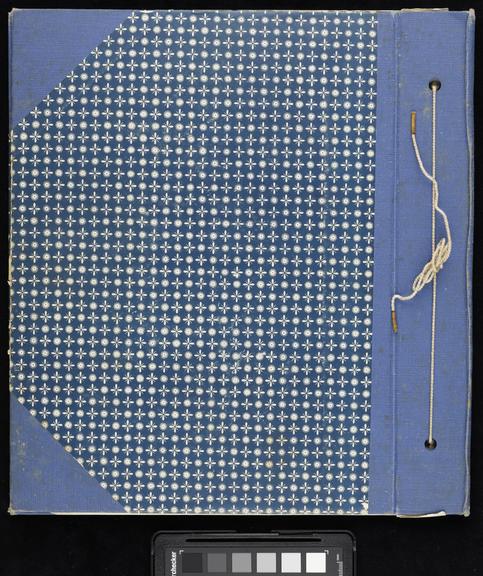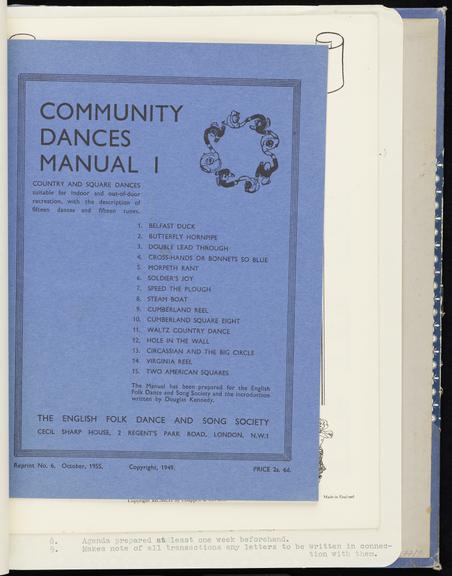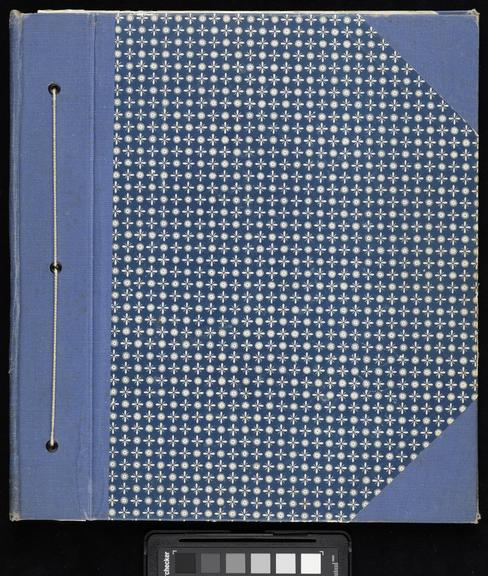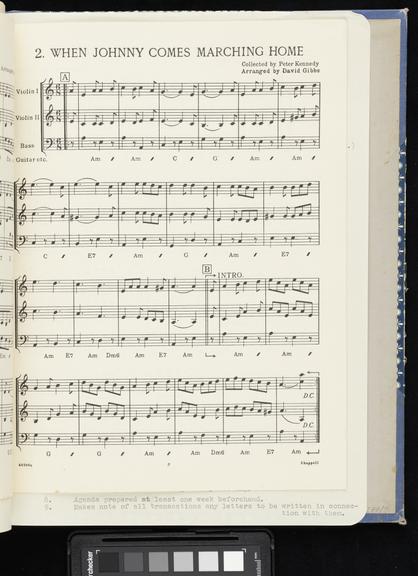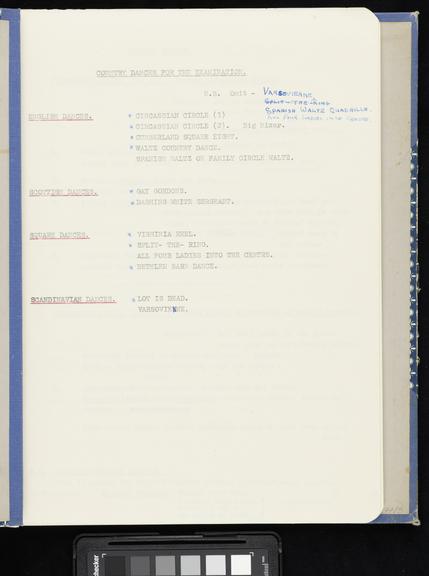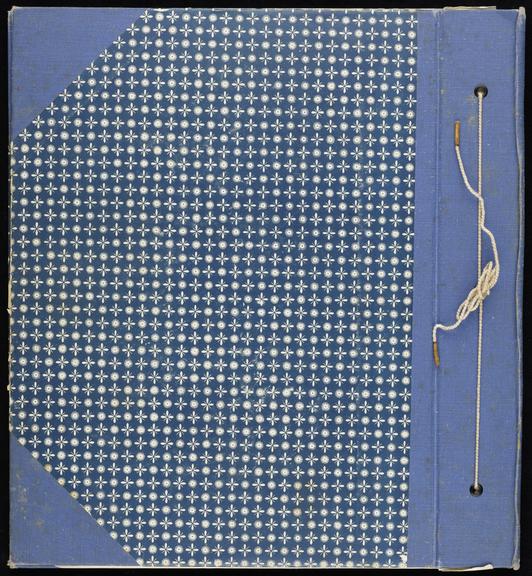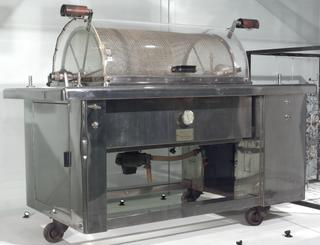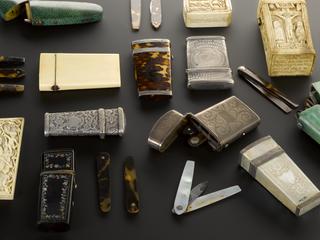Notebook on weaving as an occupational therapy technique
Notebook on weaving as an occupational therapy technique, made by Valerie Davis during her qualification as part of the Association of Occupational Therapists Diploma 1954-1957
More
Weaving samples are interspaced between Valerie Davis' handwritten notes while she was learning techniques as part of her occupational therapy qualification. Each course started with a brief history of the topic, and includes notes on how to teach these topics to the people that would eventually be in her care. Occupational therapy works with people to give them confidence and independence and to overcome barriers in their every-day lives, after illness, injury or adapting to ageing. As occupational therapy looks at every aspect of person’s life, Valerie also studied psychology, anatomy and physiology.
Valerie Davis qualified as an occupational therapist, aged 25 in 1957. Like many women of her generation, she stopped working once she married but was also living far from her nearest hospital. Her son remembers that his mother’s occupational therapy knowledge influenced the way she interacted with the world how she cared for her family, both in health and illness. Valerie Davis did return to practice in the 1970s, working at the OT department at the Royal East Sussex Hospital. However, changes in the NHS impacted how occupational therapy was carried out. Focusing more on aids and adaptations rather than the craft practice Valerie had learnt, she felt that the overall well-being and development of competence with the people she helped was often overlooked.
